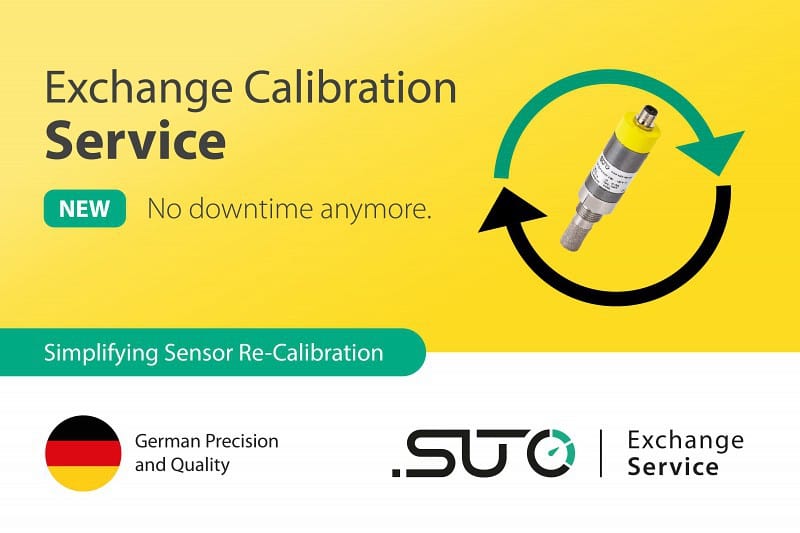
10. August 2021
Typically, the term “calibration” is used to describe the process of adjusting a sensor or measuring device so that it outputs an accurate measurement result and then comparing the measurements to a reference value. But in fact, calibration would mean that the sensor is only compared with a defined standard and the deviation is recorded and printed in a certificate. This would not include the adjustment of the sensor.
At SUTO, whenever we refer to calibration, we always mean adjustment + calibration. After a calibration, our customers receive an instrument that is adjusted and the measured values are within the specified tolerances. The results are then displayed in a calibration certificate.
Why is calibration essential?
Reliable and accurate readings from sensors and meters are critical for engineers and plant operators. You get valuable and important system information from sensors such as level, flow, pressure, temperature, and more. These measurements are then used to adjust valves and flow rates and maintain optimal pressure. This ensures reliable and safe operation of equipment.
It is important to calibrate sensors regularly to ensure that measurement results are precise and accurate so that operators can rely on the readings. The calibration method refers to the comparison of the accuracy of a sensor with predefined standards. Performing regular calibrations minimizes uncertainty and ensures that readings are accurate and consistent.
Many quality management systems require regular calibration of sensors, but often flow, dew point or pressure sensors are not calibrated over long periods of time, where at the same time other measuring tools such as simple thread gauges or other measuring equipment are calibrated regularly.
Errors in measuring devices and sensors
An error in reading the sensors is the numerical difference between the specified value and the actual value of the measured variable. Errors and inaccurate measured values of the sensor can have different causes.
The state-of-the-art sensors are based on electronic circuits, whether analog or digital sensors. Due to changes in pressure, temperature and humidity, electronic components age over time. This means that balanced circuits, for example, can become unbalanced over time due to normal aging. As a result, reference voltages or capacitances do not have the same characteristics as novelties, which leads to inaccuracies in measurements.
Another reason for measurement errors are the process conditions. The sensors are mainly used in industrial applications where it is difficult to ensure that the air quality, for example, is always under the best conditions. Dirt, moisture and oil are typical contaminants present in systems. Although the sensors are protected from contamination, this contamination can lead to inaccurate measurements over time.
Solution: Regular calibration / recalibration of sensors
SUTO offers two ways to recalibrate sensors.
The first option is the typical and most common approach, which removes the sensor from the process and sends it to a calibration laboratory. This is a good choice when measurement data is not critical to the process and users are able to go without values for a period of time, typically 7 to 10 days.
The other option is to replace the sensors in the field with freshly calibrated sensors with minimal downtime. But more on that below.
System operators should always choose the calibration approach that meets their needs, whether it’s sending sensors in for calibration or relying on replacement solutions.
Problems with typical send-in calibration:
This traditional approach has long been established in all types of industries. The sensors are removed from the system, adjusted and calibrated at the manufacturer, and then reinstalled on site.
However, there are major drawbacks that operators face, downtime, bureaucratic costs, and installation.
The entire process of disassembling the sensor, returning it to the manufacturer, waiting for the sensor to be returned, and then assembling the sensor can be a disadvantage of this approach.
A real use case for sending a sensor for recalibration may look like the following:
First, order a recalibration for your sensor. Then take the sensor out of its application or process, which sometimes means stopping the operating device for a period of time. Then pack the sensor and deliver it to the recalibration laboratory or to the manufacturer. The sensor will then be recalibrated and returned to you. Finally, get the device and then install it back into the device or process. This entire process can take 3 to 4 weeks and can be very time consuming and costly.
SUTO Exchange Calibration Service
Is there a solution to avoid downtime, deliveries and additional costs?
To solve this, SUTO offers a so-called exchange calibration service. To calibrate your sensor, simply order a replacement sensor unit that exactly matches the sensor you are using in the field. Any specific configuration of the in-field sensor can be specified when ordering so that the replacement unit you receive will be a 1:1 match to the sensor you are currently using. Once the replacement unit is received, simply replace the sensors on site. Of course, the replacement unit comes with a new calibration certificate that provides a seamless calibration record for your sensor equipment. The replaced unit is then returned to SUTO, that’s it, and you’re done.
With this solution, you reduce your downtime to an absolute minimum, so you can constantly monitor your process without having long periods without measurement data. But not only is downtime reduced, the installation effort is also kept to a minimum, as the on-site installation does not have to be visited twice. A disposable visit is all that is required, simply place the replacement sensor in the process and take back the old sensor.
This service optimizes the productsozess of a sensor recalibration, reduces costs and also enables constant and reliable measurements in your process and application.
Please contact our service teams for more information on which products are supported

